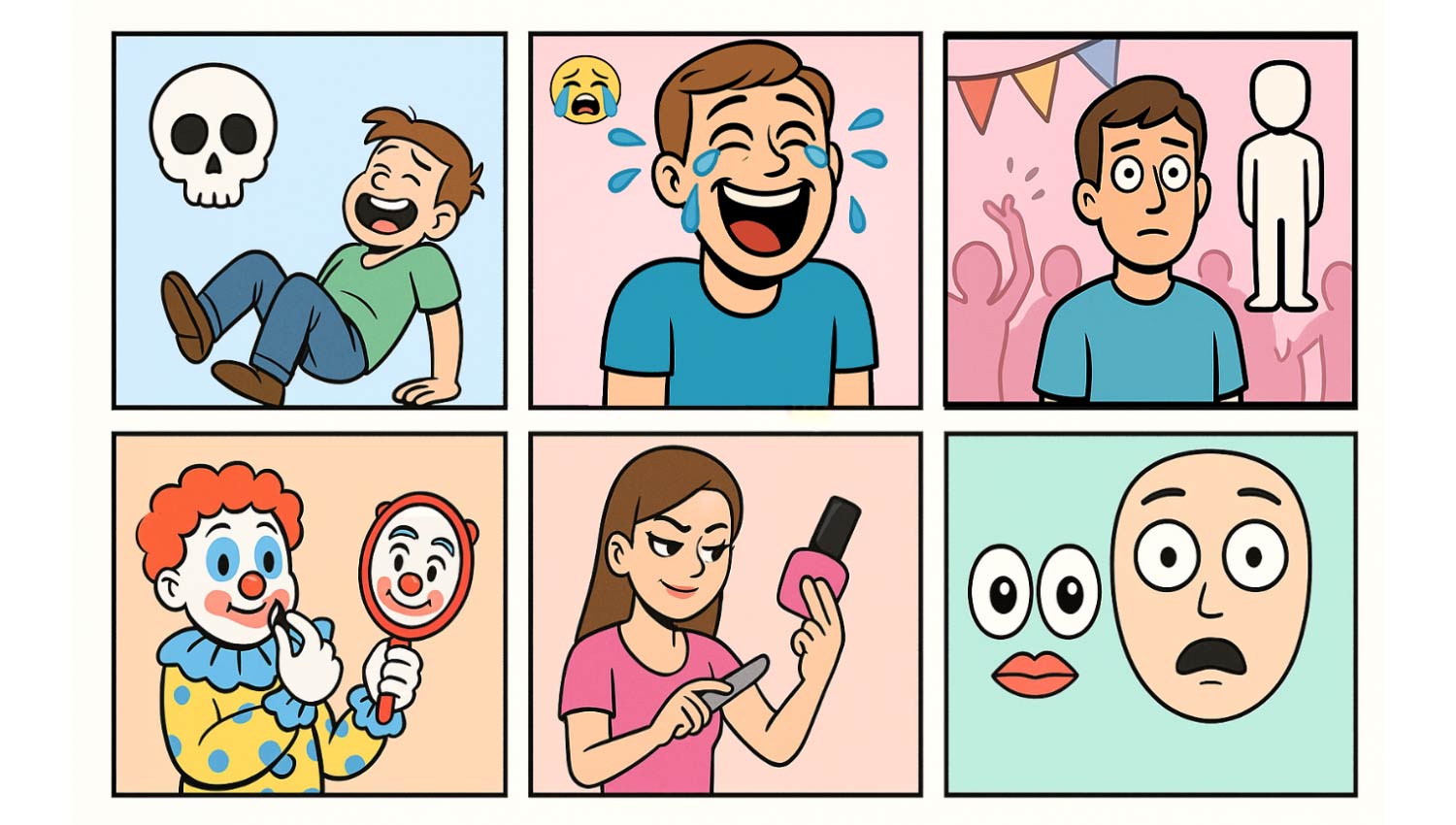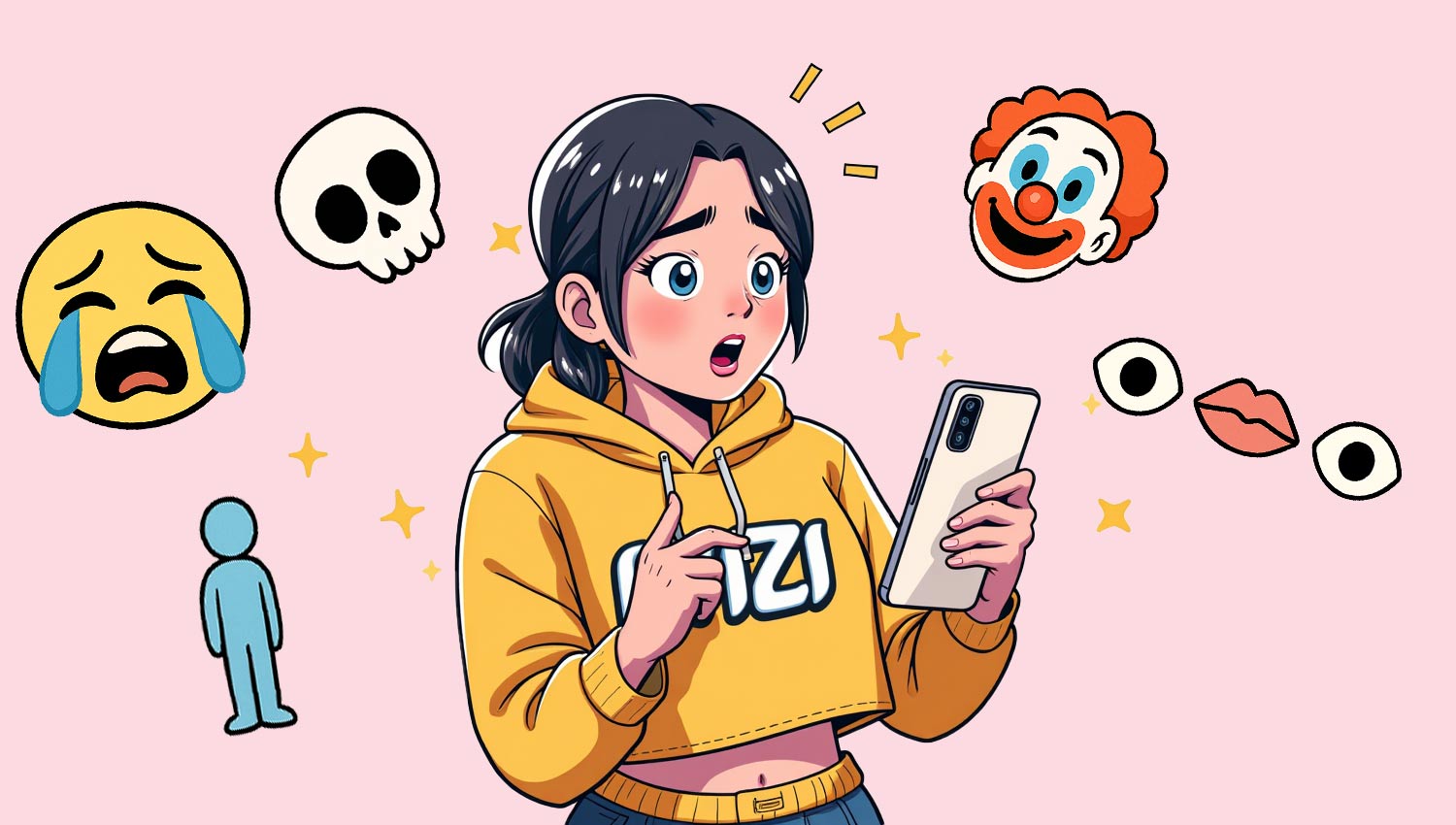📲 Visual Slang: The New Language of the Internet
In today’s world, some of the most expressive, viral, and hilarious messages come without a single word. A single emoji can say “I’m dead from laughter” (💀), a meme can call someone out better than a sentence ever could, and a reaction GIF can instantly capture your vibe.
This is visual slang—the silent but loud way we speak online. Whether you’re on TikTok, Instagram, or just trying to keep up in the group chat, understanding this visual language isn’t optional anymore—it’s essential.

😂 Emojis That Carry the Conversation
Emojis aren’t just punctuation—they’re personality. And over the years, a few have taken on slang meanings way beyond their original design.
| Emoji | Slang Meaning | Real-Life Use |
|---|---|---|
| 💀 | “I’m dead” / “That’s hilarious” | “Not her showing up with that outfit 💀💀💀” |
| 😭 | Laughing uncontrollably (ironic use of the “crying” face) | “This whole episode had me crying 😭😭😭” |
| 🧍 | Awkward / frozen / no response | “Me after confessing and getting left on read 🧍” |
| 🤡 | Foolish / self-own / “I played myself” | “Told myself I’d only check his story once 🤡” |
| 💅 | Confident / unbothered / petty glam | “He said I was being dramatic… and? 💅” |
| 👁️👄👁️ | Shocked / blank stare / emotional damage | “After seeing my bank statement: 👁️👄👁️” |
| 👻 | Ghosting or getting ghosted | “He vanished after two dates 👻” |
| 🫠 | Embarrassed, melting, “kill me now” | “Sent the message to the wrong person 🫠” |
| 🥴 | Dizzy, messy, or slightly flirty | “Three hours of sleep and iced coffee only 🥴” |
These emojis change meanings based on tone, platform, and generation. For example, millennials might still use 😂 seriously, while Gen Z is more likely to drop 💀 or 😭 ironically.

📸 Meme Slang: The Templates That Talk for You
Some memes have become universal language tools. You don’t even need a caption—just the right meme says it all.
- “This you?” + screenshot
Used to call someone out for hypocrisy or fake behavior. “We should all be kind.”
[Screenshot of them gossiping]
“This you?” - Gru’s Failed Plan (Despicable Me)
Highlights a plan that hilariously backfires. Step 1: Make a subtle joke
Step 2: Hope no one notices
Step 3: Entire internet roasts you
Step 4: Regret - SpongeBob Memes
- “No thoughts, head empty”
Often used with peaceful animals or blank stares. “After 5 hours of scrolling TikTok”
Image of a cat staring into space: No thoughts. Head empty. - Distracted Boyfriend
Represents temptation or losing focus. “Me ➡️ Spotify ➡️ Still checking TikTok for music”
Memes often work as visual punchlines, and their usage is fluid. If your meme game is off, the slang might not land.
🎬 Reaction Culture: GIFs That Do the Talking
Reaction GIFs are basically the internet’s way of saying “same,” “no,” or “you wild for that” without typing a word.
Some of the most iconic slang-laced reactions include:
- Keke Palmer’s “Sorry to this man”
= Feigning ignorance or shade. Used when you want to act like you have no idea who someone is or what they’re talking about. - Beyoncé’s side-eye
= Suspicious or judging silently. “When someone says ‘It’s just a cold’ mid-sneeze 😒” - Tyra Banks yelling “We were rooting for you!”
= High-drama disappointment. Used for betrayals or letdowns. Sometimes ironically dramatic. - Michael Scott “Nooooo!”
= Panic or disaster. “When your phone dies mid-text.” - Nick Young confused face (with question marks)
= Pure confusion or disbelief. “When your teacher says ‘pop quiz’ after a long weekend.”
GIFs are usually dropped in DMs or replies to instantly match a mood. They often come from pop culture, reality TV, or viral clips, and they evolve fast.
🌎 Visual Slang Around the World
Visual slang changes by region. Here are a few global cues that carry slang-like meanings:
- Japan (Kaomoji)
(^▽^) = Happy
(¬_¬) = Annoyed
(╯°□°)╯︵ ┻━┻ = Rage quit (literally flipping the table) - Korea
“ㅋㅋㅋ” = Laughing (like “haha”)
“ㅠㅠ” = Crying or sadness - Latin America
- “XDDD” = Old-school laughing online
- Over-the-top telenovela reaction memes are used just like GIFs in English
Being aware of these regional visual dialects helps avoid misunderstandings and connects you better with global online communities.
❌ Don’t Get Caught Slipping: Visual Slang Mistakes
- Using 💀 in a sad context = yikes. It’s for laughing, not loss. “RIP grandma 💀” ← Please don’t.
- Mixing 🥴 and 😵 = Wrong vibe.
- 🥴 = “I feel off, lol.”
- 😵 = “I’m KO’d or overwhelmed.”
- Using 😭 to be sincere with Gen Z? They might think you’re being sarcastic.
- Overusing slang visuals in formal work emails can come off weird unless your office culture is super chill.
🧠 Real Talk: When Visual Slang Replaces Language
Imagine this:
Friend: “You still dating that guy?”
You: 👁️👄👁️
Boom. Full paragraph, no words.
Or…
Coworker posts: “9am meeting tomorrow!”
Group chat: Michael Scott “Noooo!” GIF
Everyone knows the vibe. No need to reply with text.
This is the power of visual slang: emotional efficiency. It works fast, it sticks, and when done right, it hits harder than a caption.
🧩 Related Slang Terms to Explore
These slang words are almost always paired with emojis, memes, or visual tone:
- “Dead” → 💀
- “Slay” → 💅
- “Ghosted” → 👻
- “Main character energy” → Usually meme + dramatic effect
- “It’s giving…” → Setup for a visual vibe or aesthetic
- “Rizz” → Often followed by GIFs of smooth behavior
- “No cap” → Might be said, but backed up with confident meme energy
🧠 Wrap-Up: Speaking Fluent Emoji Is Real
This isn’t just internet fluff—it’s real communication. Emojis, memes, and reactions are the modern street slang of visual culture. They express tone, humor, sarcasm, and identity better than plain text ever could.
The next time someone sends you 👁️👄👁️ or just drops 💀 in response to your joke, know this: you’re speaking fluent slang… without saying a word.
🔗 More Visual Slang Knowledge
- How Emojis Became Their Own Language
- From Emoji to Acronyms: Digital Language Redefined
- The Most Misunderstood Slang Terms


Leave a Reply